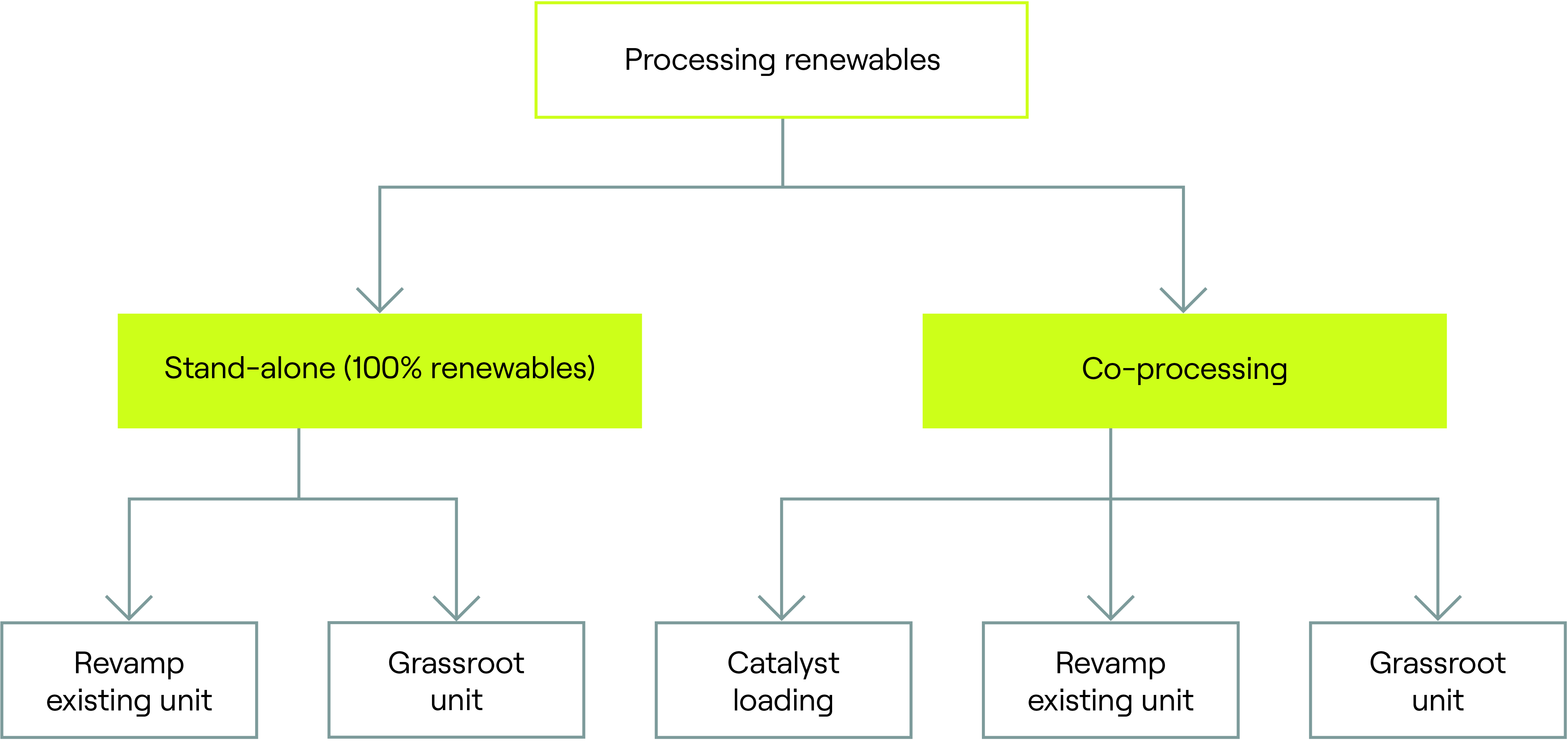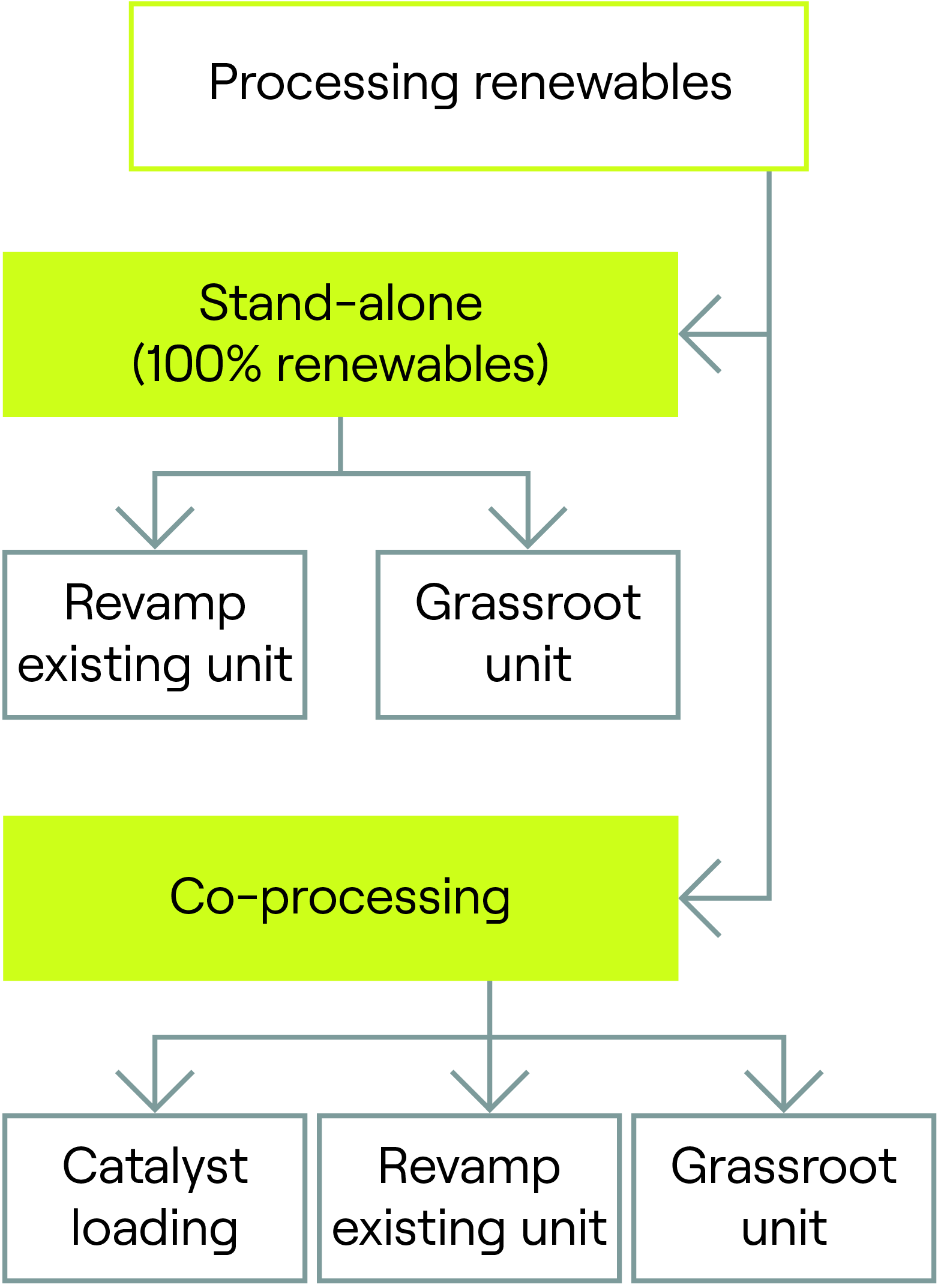What if...
expert guidance was always at hand?
HydroFlex™ Fuel for Thought
Naphtha: the renewable hidden treasure
As regulation and consumer demand shifts toward renewable products, the demand for non-fossil feedstocks is increasing. Now, refiners can get value from a product that they are already producing: Renewable Naphtha.
Add value to your operation
Get value from renewable naphtha
Renewable naphtha is an intermediary product that converts to gasoline, plastics, or feedstock for hydrogen production– and it is a byproduct that refineries already produce when they convert renewable feedstock into diesel. In the past, renewable naphtha production decreased due to low prices and low demand. But recently, there has been an uptick in demand and cost.
Renewable naphtha can be used as:
- Feed for steam crackers in plastic production, thanks to its paraffinic molecules and little to no contaminants or oxygen.
- Feed for H2Bridge, an integrated hydrogen unit that turns renewable feed sources into hydrogen with low greenhouse gas emissions.
- A gasoline blending component to increase renewable percentage.
Renewable Naphtha can also be converted into aromatics, which can, in turn, create plastic. EU regulations and consumer demands have led to increasing demand for plastics from non-fossil sources, making naphtha an increasingly valuable resource.
Meet rising demand for high-grade biofuels
We have a track record of developing innovative solutions for clean, competitive fuels from renewable feedstock since 2004.
We have a track record of developing innovative solutions for clean, competitive fuels from renewable feedstock since 2004.
Although the legislation concerning renewable feedstock is relatively recent, we are ready to help you meet the demand for modern, high-grade biofuels today. With HydroFlex™, you can produce renewable gasoline, jet fuel and diesel from almost any feedstock, including tall oil, used cooking oil, animal fats and vegetable oils.
The process is complex, very different to refining non-renewable fuels and requires a substantial investment. But it is also profitable.
Get the full storyFive ways to turn renewable feedstocks into high-grade transport fuels


Catalysts for renewable feedstocks
HydroFlex™ gives you access to a portfolio of 25 catalysts specific to processing renewable feedstocks. With our design and processing knowhow, we’ll help you select the optimal combination of catalysts for the renewable feedstocks available to your refinery.
Equipment for processing renewables
HydroFlex™ technology includes a comprehensive range of equipment, spare parts and consumables to process the renewables you intend to use as feedstock. We work closely with you to make sure the resulting plant is optimized to the specific needs of your refinery.
Services based on experience and knowhow
Decades of dedicated research. A broad range of hands-on experience. Deep insight into process design. You have access to the industry’s broadest range of proven engineering, technical, business and training services based on everything we have learned, designed and built for processing both renewable and non-renewable feedstocks.
Project development for peak onsite performance
From feasibility study to commissioning and beyond, we ensure optimal processes and solutions to help your business and our collaboration thrive. Even when design, construction, commissioning and start up are complete, we are available to ensure your HydroFlex™ unit continues to run at peak performance.
Process licensing
for renewables
We invest around 9% of our revenue in R&D, enabling us to carry out market-driven research into catalysis and process technologies – including renewables. Resulting in new technologies, solutions and applications that anticipate changing demands in the refinery industry.